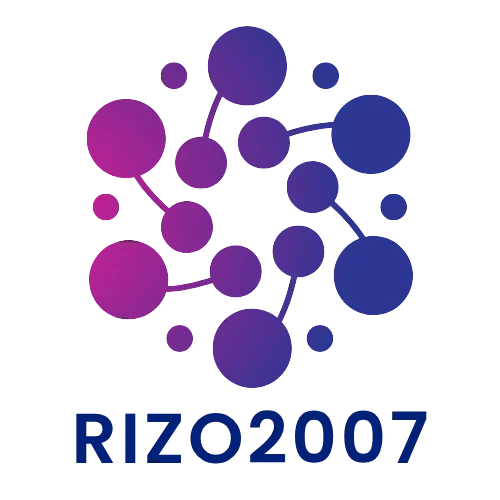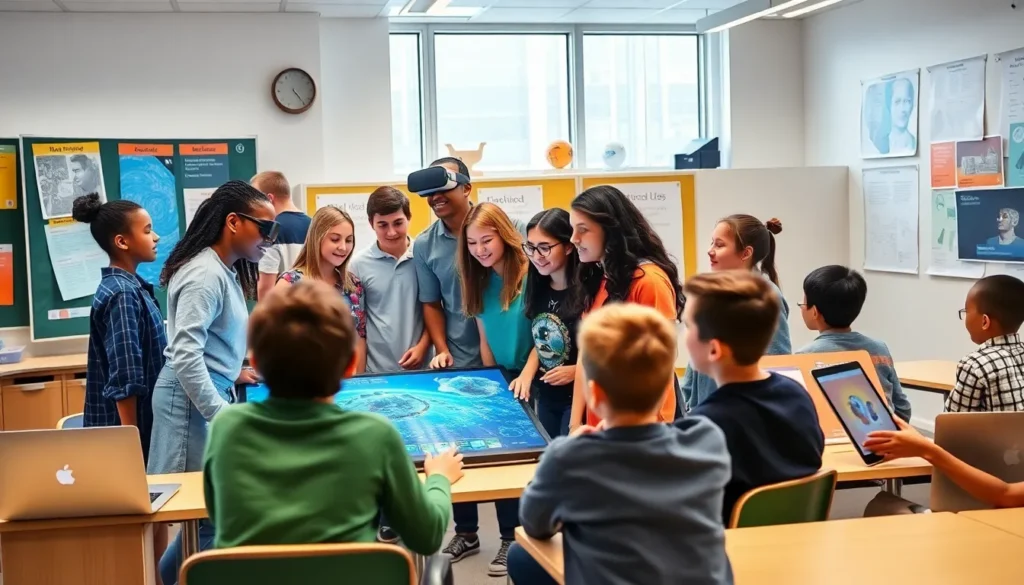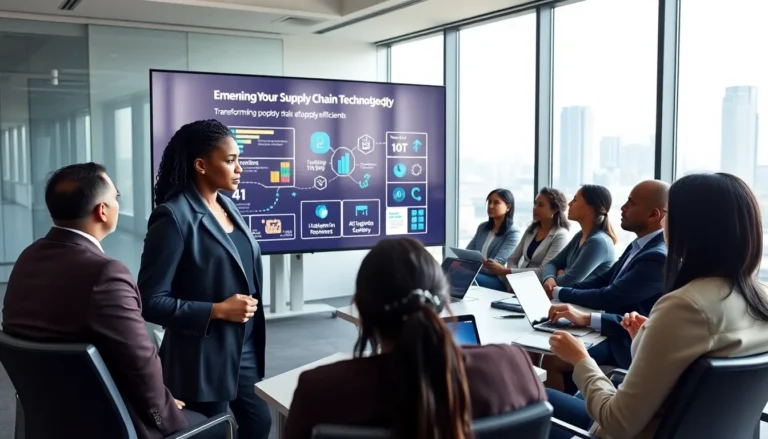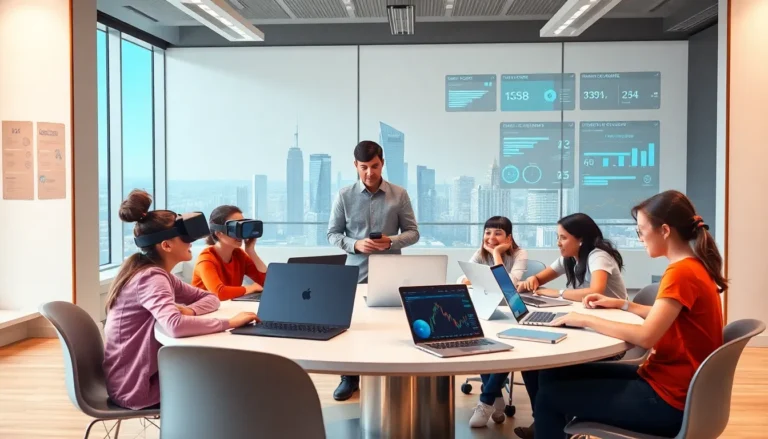Table of Contents
ToggleIn a world where smartphones have become appendages and every kid seems to be born with a tablet in hand, the classroom dynamic is shifting faster than a student dodging assignments. Emerging technologies in education aren’t just the latest fads: they are reshaping how knowledge is disseminated and absorbed. From personalized learning experiences to the use of artificial intelligence, this article explores how advancements are turning traditional education on its head. Buckle up: it’s going to be an exhilarating ride.
The Impact of Technology on Learning
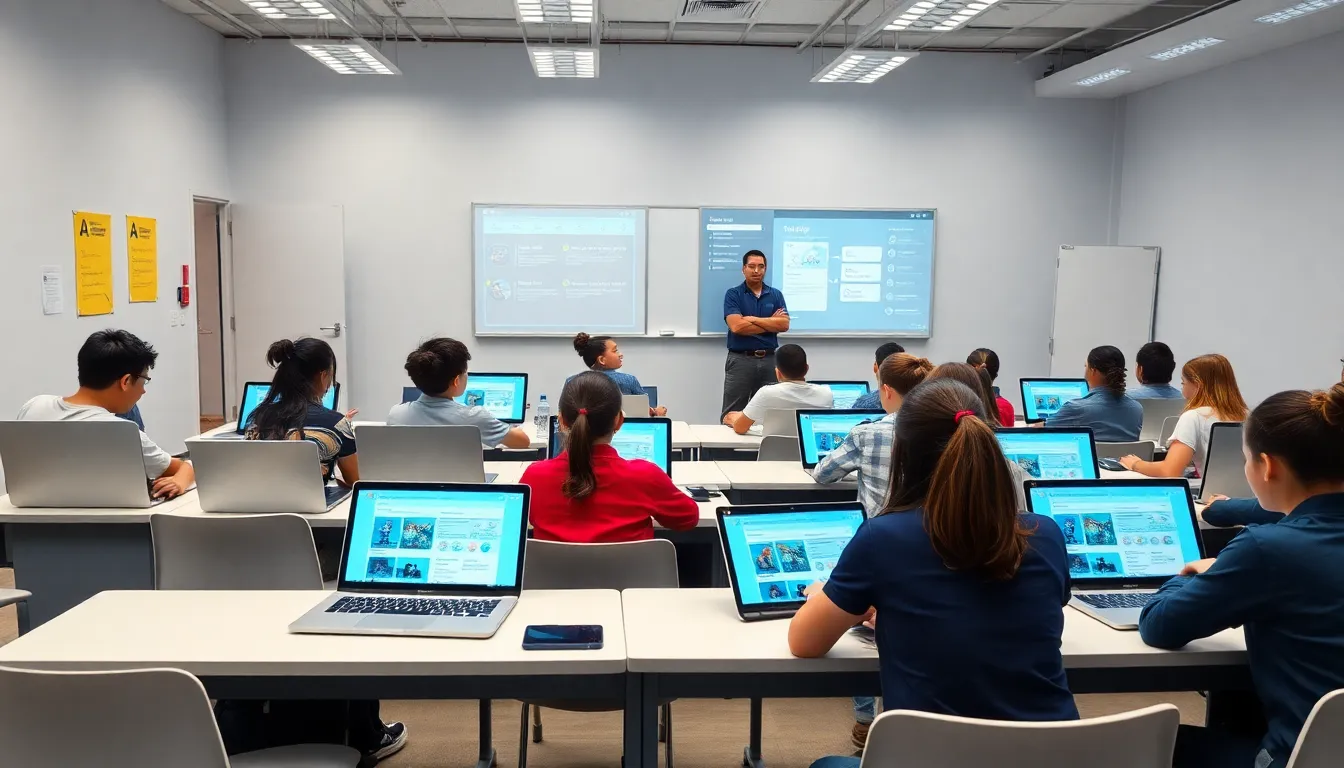
Personalized Learning Experiences
Gone are the days of one-size-fits-all education. With technology, learners can now engage with tailor-made experiences that cater to their unique needs. From platforms that assess learning styles to resources that adapt based on student performance, personalization is at the forefront of modern education. Students can now progress at their own pace, ensuring they master concepts before moving on.
Adaptive Learning Systems
Adaptive learning systems are the superheroes of the education realm. These platforms use algorithms to modify the content delivery in real time. For instance, if a student struggles with a specific math problem, the system can offer additional resources or simpler explanations. This adaptability not only enhances understanding but also boosts confidence among learners.
Artificial Intelligence in Education
Artificial Intelligence (AI) is no longer the stuff of science fiction. It has infiltrated classrooms, assisting educators and students alike. AI-powered tools can tutor students, grade assignments, and even provide insights into learning patterns. This frees up teachers to focus more on mentorship rather than administrative tasks, creating a more supportive learning environment.
Virtual and Augmented Reality Tools
Immersive Learning Environments
Imagine being able to explore the surface of Mars or jump into the depths of the ocean without leaving your classroom. Virtual Reality (VR) offers experiences that immerse students in interactive environments. This approach not only makes learning more engaging but also allows for experiential learning that can deepen understanding and retention of complex subjects.
Enhancing Engagement through VR/AR
Augmented Reality (AR) further complements VR by overlaying digital elements onto the real world. Students can interact with 3D models of historical artifacts or biological structures, making abstract concepts more tangible. This blend of reality and digital innovation captures attention and fosters a love for learning.
Gamification in the Classroom
Motivating Students with Game Mechanics
Gamification incorporates game design principles into educational contexts. This approach motivates students by rewarding progress and creating competitive environments where learners strive to achieve their best. Badges, leaderboards, and point systems transform mundane tasks into engaging challenges that stimulate enthusiasm.
Building Skills through Interactive Experiences
By integrating interactive games into learning, students can develop critical thinking and decision-making skills. Simulations and role-playing exercises allow learners to explore real-world scenarios, enhancing their problem-solving abilities and preparing them for future challenges outside of the classroom.
Cloud Computing and Collaboration
Enhancing Accessibility and Flexibility
Cloud computing has revolutionized how educational resources are accessed. With platforms like Google Classroom, students can retrieve materials anytime, anywhere. This flexibility facilitates a blended learning approach, where formal and informal learning environments converge.
Facilitating Collaborative Learning
Collaboration has never been easier. Cloud solutions allow students to work together on projects in real-time, even though physical distances. Group assignments can be tackled with seamless sharing of resources, which encourages teamwork and collective problem-solving.
Blockchain Technology in Education
Securing Credentials and Transcripts
Blockchain technology is synonymous with security and transparency. In education, it provides a reliable means for storing academic credentials and transcripts. This ensures that records cannot be altered or tampered with, creating trust in the authenticity of qualifications.
Enhancing Trust in Educational Records
With the increased prevalence of online degrees and credentials, verifying authenticity has become critical. Blockchain technology simplifies this process. Institutions can use this tech to confirm educational backgrounds swiftly, facilitating smoother admissions and hiring processes.
Challenges and Considerations
Addressing Digital Divide Issues
While technology offers immense benefits, the digital divide remains a substantial challenge. Not every student has equal access to the necessary devices or high-speed internet. Addressing these disparities is crucial to ensure that all students can benefit from emerging technologies.
Ensuring Data Security and Privacy
With great technology comes great responsibility. Protecting student data is paramount in the educational landscape. Educators and institutions must prioritize cybersecurity measures to safeguard personal information from breaches, ensuring a safe and secure learning environment.
